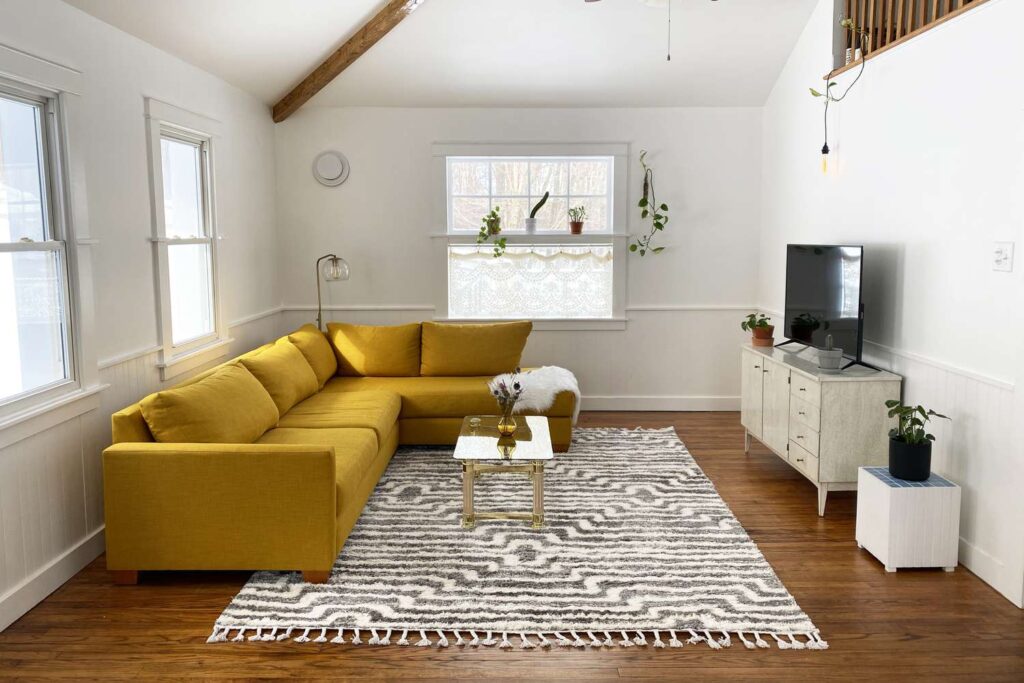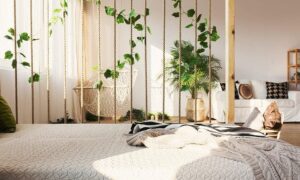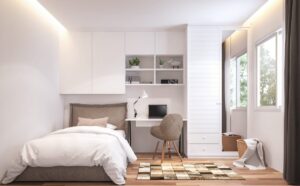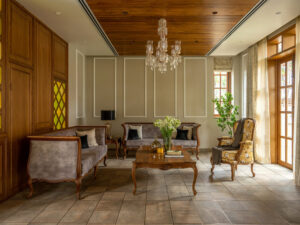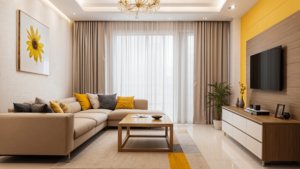It was a chilly autumn evening, and the living room was buzzing with laughter and conversation. Friends gathered around, sipping warm drinks, but something about the space felt incomplete. While elegant, the hardwood floors seemed cold, literally and figuratively. Then, someone suggested adding an area rug. A few weeks later, the transformation was remarkable. A soft, patterned rug now covered the floor, instantly warming the space and pulling together the room’s decor. Thanks to the perfect area rug, the living room had gone from a functional space to a cosy, inviting environment.
This story is typical for homeowners who realize the power an area rug has to elevate the design and comfort of a living room. Whether it adds warmth, defines spaces in an open floor plan, or introduces colour and texture, area rugs are an essential design element in modern homes. In this article, we’ll explore various styles, materials, and sizes of area rugs while diving into statistics and expert recommendations to help you choose the best rug for your living room.
The Growing Popularity of Area Rugs
Area rugs have been a staple in home design for centuries. Still, their popularity has surged in recent years as homeowners and designers alike look for ways to add warmth and personality to living spaces. According to a report by Grand View Research, the global rug market was valued at $12.2 billion in 2021 and is expected to grow at a compound annual growth rate (CAGR) of 6.2% from 2022 to 2030. The report attributes this growth to an increasing focus on home decor, mainly as people spend more time at home due to remote work trends and lifestyle changes brought on by the COVID-19 pandemic.
Area rugs have become particularly popular in living rooms, serving aesthetic and functional purposes. With so many styles, materials, and sizes to choose from, selecting the right area rug can significantly impact the look and feel of a space.
Choosing the Right Size for Your Living Room
Size is one of the most important factors to consider when choosing an area rugs for living room. An appropriately sized rug can help anchor the room, create balance, and define seating areas, while a rug that is too small or too large can throw off the proportions of the space.
A common rule of thumb is to ensure that the rug is large enough to fit at least the front legs of your furniture. Placing all furniture on the carpet in larger living rooms can create a more cohesive look. However, for smaller living rooms, opt for a rug that frames only part of the seating arrangement.
A 2023 survey by Wayfair found that the most popular rug size for living rooms is 8×10 feet, followed closely by 9×12 feet. These sizes work well for most standard living rooms, providing enough coverage to tie together furniture pieces without overwhelming the space.
Materials Matter: What to Look For
When selecting an area rug, material is crucial, particularly for high-traffic areas like living rooms. The material you choose will affect the rug’s appearance and durability, ease of cleaning, and feel underfoot. Here are some of the most popular materials for living room rugs:
- Wool: Known for its softness and durability, wool is one of the most popular materials for area rugs. It’s naturally stain-resistant and can withstand heavy foot traffic, making it an ideal choice for busy households. According to the Carpet and Rug Institute, wool rugs account for approximately 35% of all area rug sales in the U.S., thanks to their durability and luxurious feel.
- Synthetic Fibers: Materials like nylon, polyester, and polypropylene are famous for more affordable rugs. These materials are often accessible to clean and come in various colours and patterns. Polypropylene, in particular, has grown in popularity due to its water-resistant properties, making it a practical choice for families with children or pets. A 2022 American Home Furnishings Alliance study showed that 42% of households with pets preferred synthetic rugs for easy maintenance.
- Natural Fibers: For those seeking an eco-friendly option, rugs made from jute, sisal, or seagrass are great choices. While these materials may not be as soft underfoot as wool, they provide a rustic, textured look that works well in more casual or bohemian-style living rooms.
Design and Style Trends
Design plays a significant role in choosing an area rug, as the correct pattern, colour, and texture can set the tone for the entire room. In recent years, several design trends have emerged that cater to various tastes, from minimalist to eclectic.
- Neutral Tones and Minimalist Designs: Neutral rugs, particularly in shades of beige, grey, and off-white, have become increasingly popular. These rugs provide a calming backdrop and allow flexibility in decor elements like throw pillows, artwork, and furniture. In 2023, a survey by Houzz found that 56% of homeowners preferred neutral rugs for their living rooms, as they are versatile and easy to incorporate into different design styles.
- Geometric Patterns: For a more modern look, geometric patterns are trending. Rugs with bold lines, hexagons, and diamonds can make a statement and add visual interest to an otherwise simple living room. According to Interior Design magazine, geometric rugs have seen a 35% increase in sales over the past three years, particularly among younger homeowners.
- Vintage and Distressed Rugs: Another growing trend is using vintage-inspired or distressed rugs. These rugs mimic the look of antique pieces, adding a sense of history and character to the space. Many homeowners are drawn to the faded colours and intricate patterns that give these rugs a one-of-a-kind feel. Etsy reports that searches for “vintage area rugs” increased by 65% in 2022, making it one of the year’s top design trends.
Enhancing Comfort and Functionality
Beyond aesthetics, area rugs also play a practical role in living rooms. They provide comfort underfoot, reduce noise, and help insulate the room by adding a layer of warmth. This is particularly important for homes with hard flooring surfaces like tile or hardwood.
Area rugs also help protect flooring from scratches and wear, especially in high-traffic areas. For families with small children, rugs can provide a soft surface for play, reducing the risk of injury from falls. A report by the National Safety Council notes that adding rugs to homes with toddlers or elderly family members can help prevent slips and falls, making them a valuable addition for safety and comfort.
Layering Rugs: A New Trend
One of the latest design trends in living room decor is layering rugs. This involves placing one rug atop another to create a more dynamic and textured look. A more enormous, neutral carpet is placed on the bottom, with a smaller, patterned rug layered on top. This technique allows for greater creativity and personalization in home decor.
According to a 2023 survey by Architectural Digest, 40% of interior designers recommend layering rugs to add depth and character to living rooms. This trend looks stylish and allows homeowners to mix different materials and patterns for a unique look.
Conclusion
Area rugs are more than just decorative pieces; they are essential elements that bring warmth, comfort, and style to a living room. Whether you opt for a bold geometric pattern or a neutral wool rug, the right choice can transform your space into a cosy and inviting environment. As homeowners continue to invest in home decor, the demand for high-quality area rugs is set to grow, making them a crucial aspect of modern interior design.
By considering factors like size, material, and style, you can find the perfect area rug to enhance your living room’s functionality and aesthetics, ensuring it remains a welcoming space for years to come.

